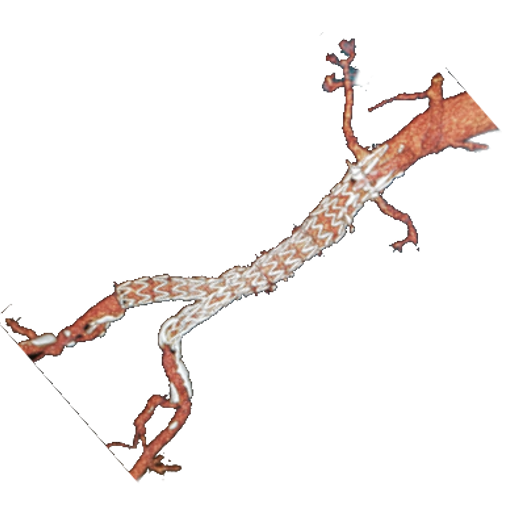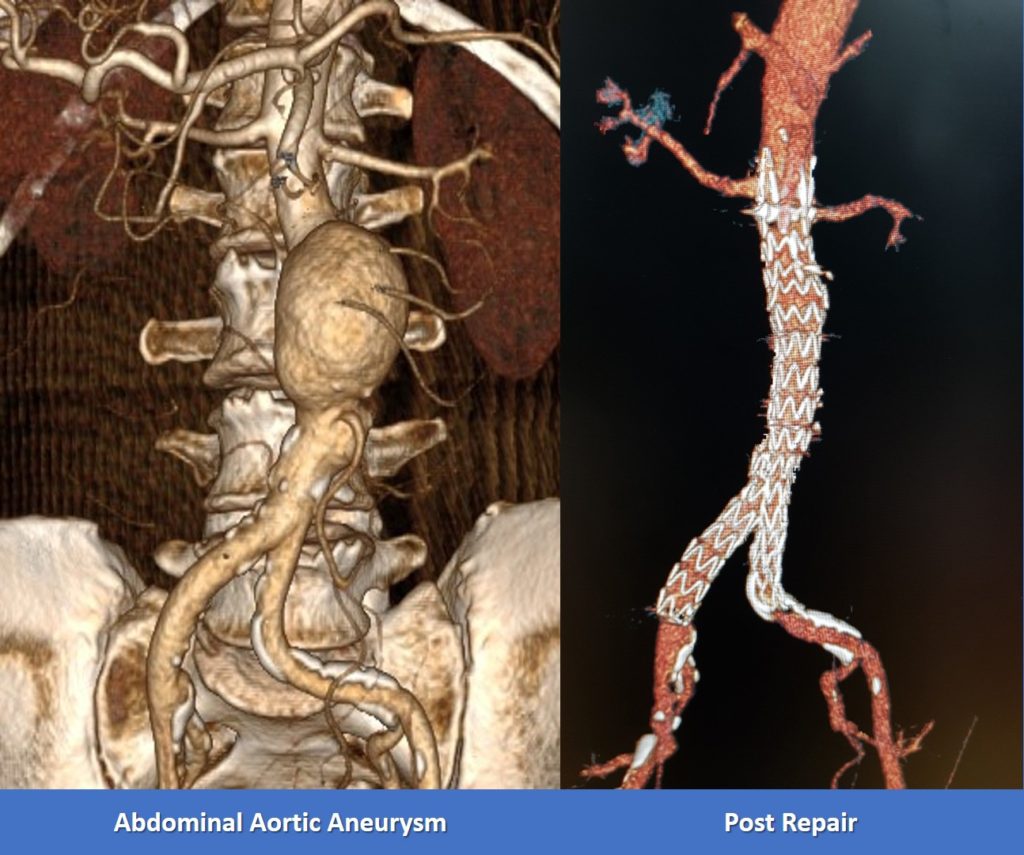

An abdominal aortic aneurysm is an enlarged dilated blood vessel, which supplies blood to body and lower limbs. The aneurysms usually remain silent, until they rupture and cause death. Large aneurysms can cause abdominal discomfort and back pain but are usually missed. Countries like USA & UK have screening programs where aneurysms are picked up during routine scans in people who are at high risk. In India, there is no data about the incidence of aneurysms because of lack of awareness and lack of screening programs unlike in western countries.
Albeit an aneurysm might happen in any conduit, they are most normal in the chest and and abdominal regions. In the abdominal aorta, the most well-known area of an AAA is simply underneath the renal arteries. The most widely recognized complications emerging from an abdominal aortic aneurysm (AAA) are intense pain from ischemia, thromboembolism and rupture of the aneurysm leading to morbidity and conceivable death.
Abdominal aortic aneurysms have to be treated when they grow up to morethan 5cm in size, because there is a growing risk of sudden rupture beyond this size.The average growth rate of aneurysms is around 0.4cm per year if untreated. We have no idea as to how many sudden deaths in elderly are due torupture of aneurysms, especially in our country where hypertension, smoking and fatty food intake is highly prevalent. Size is the best determinant of rupture where 40% of untreated aneurysms 5.5-6cm or larger will rupture within 5 years. The average survival without treatment is around 17 months.
Although there is seriousness attached to this condition, there is no need to worry, as these can be tackled very efficiently by key-hole surgeries (EVAR). Open aneurysm repair is reserved for difficult anatomies and younger presentations in most cases. With adequate planning and good aneurysm morphology, EVAR has the ability to treat almost any aneurysm with minimal mortality and morbidity ates. We are proud to be able to serve patients with this modern modality.

